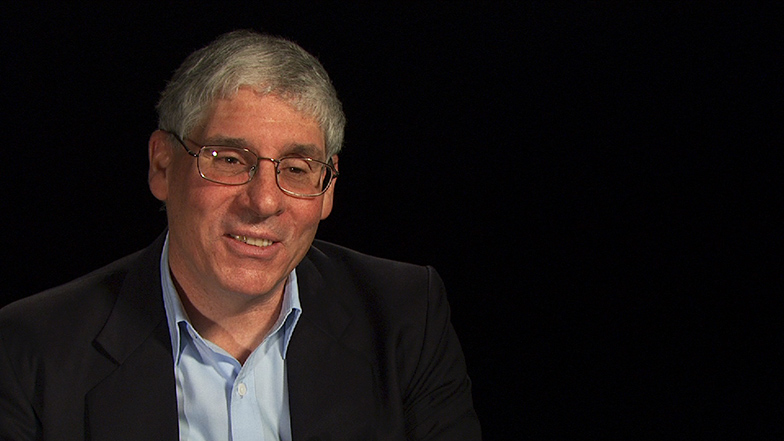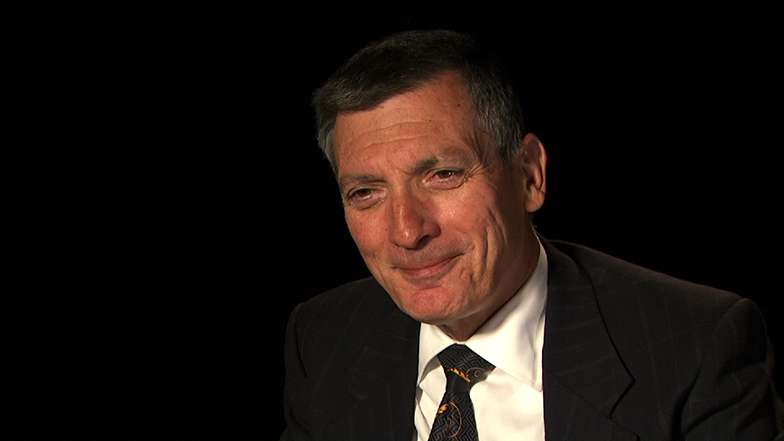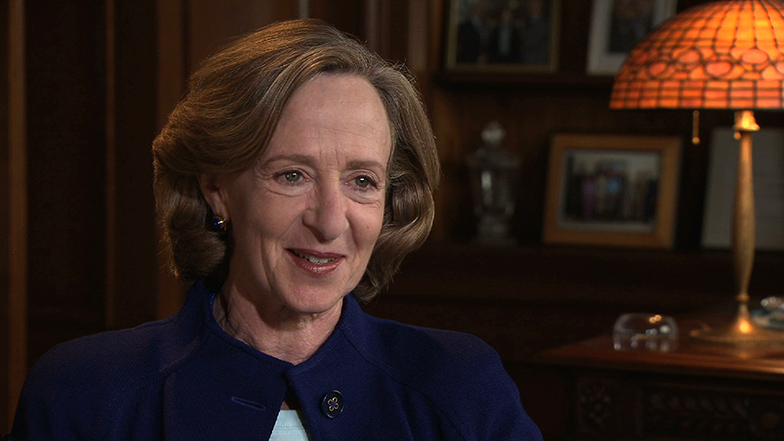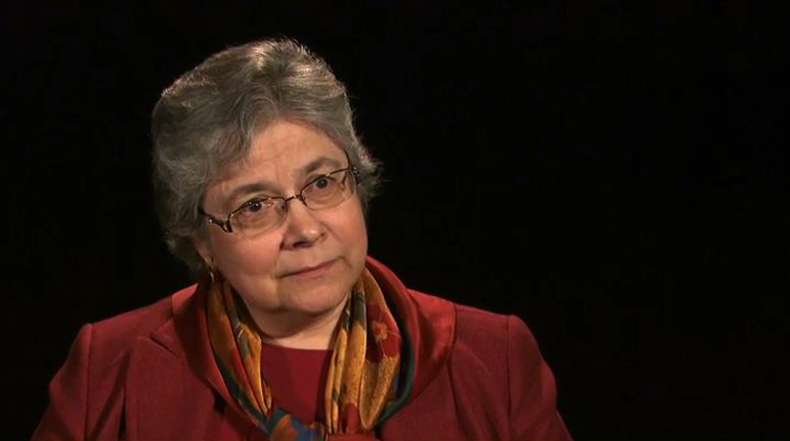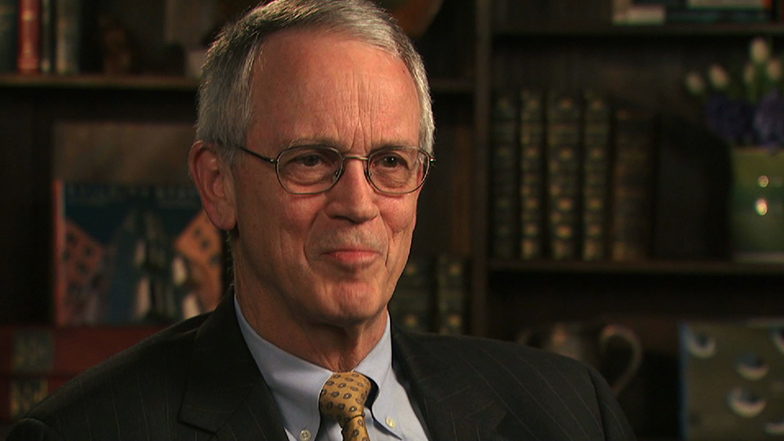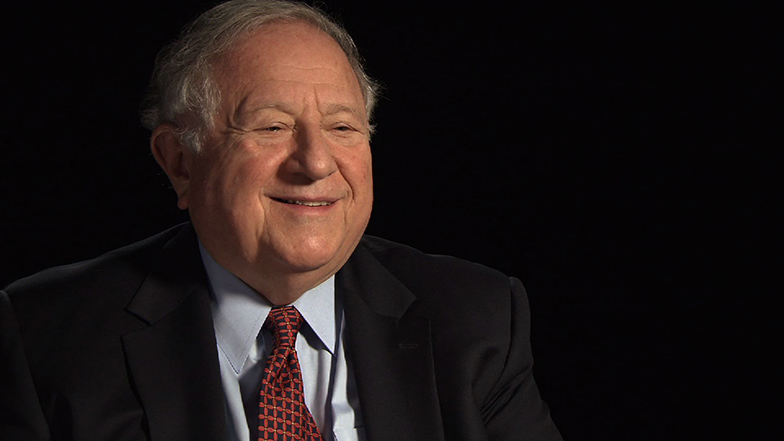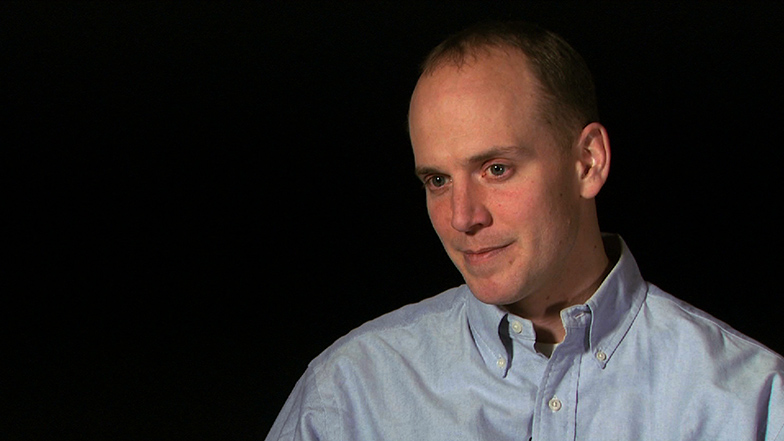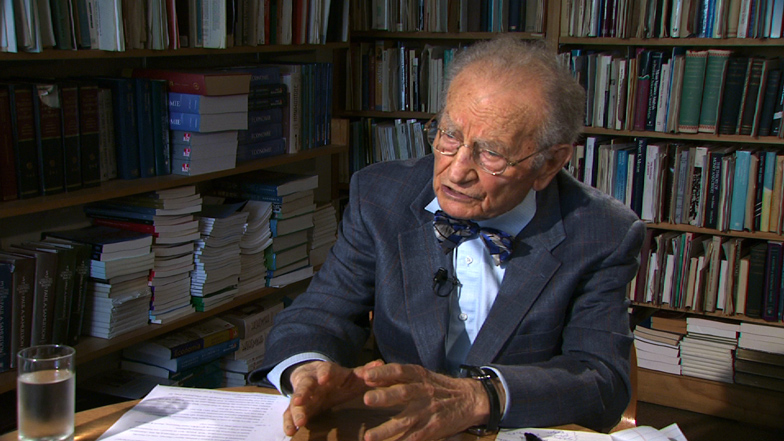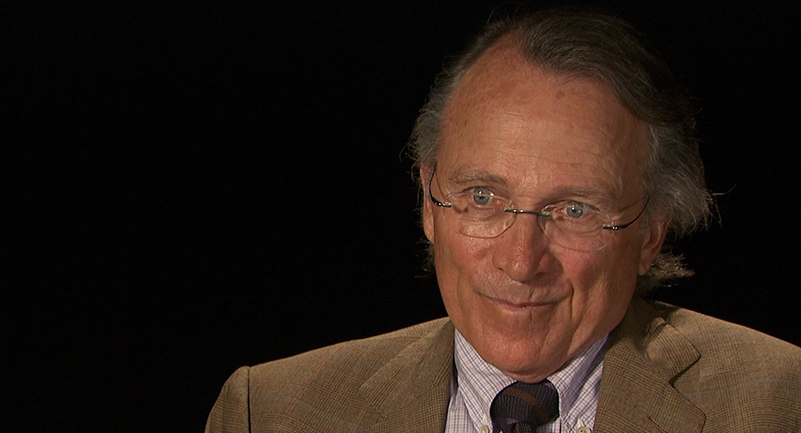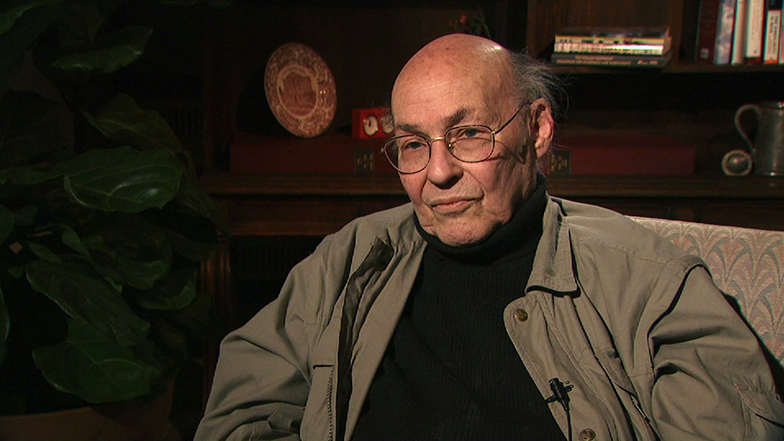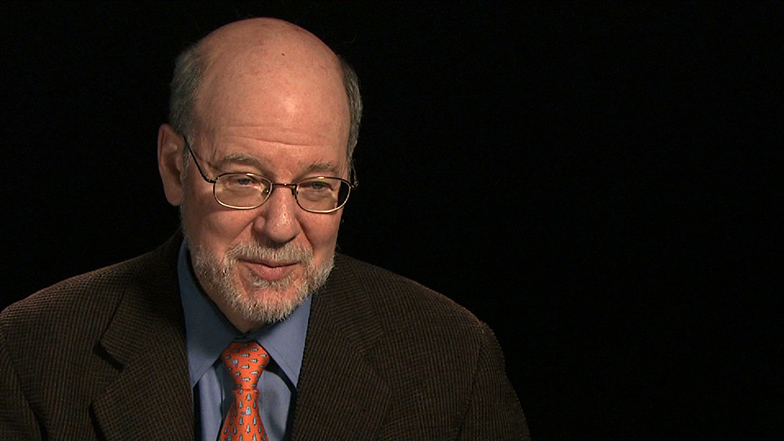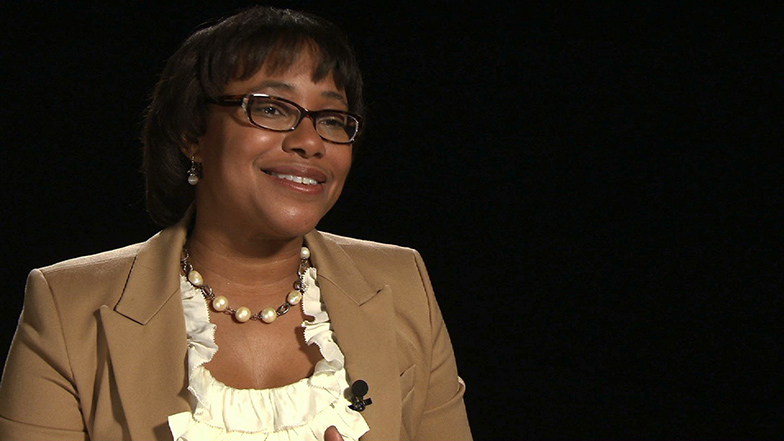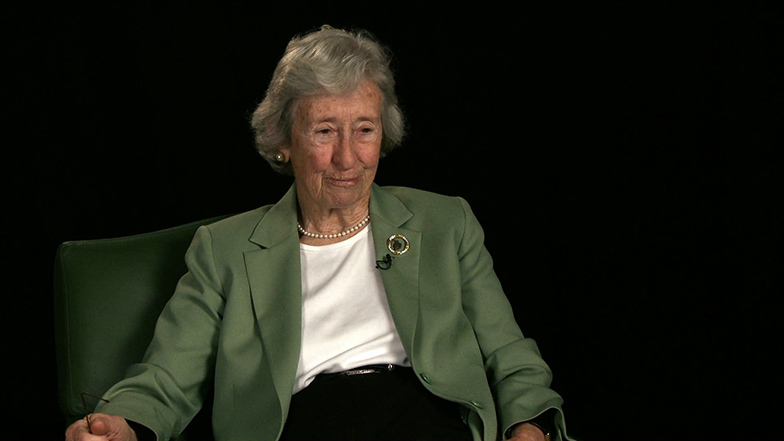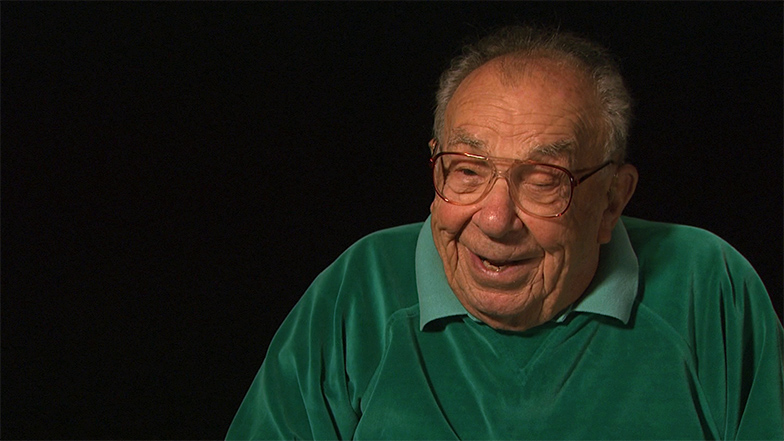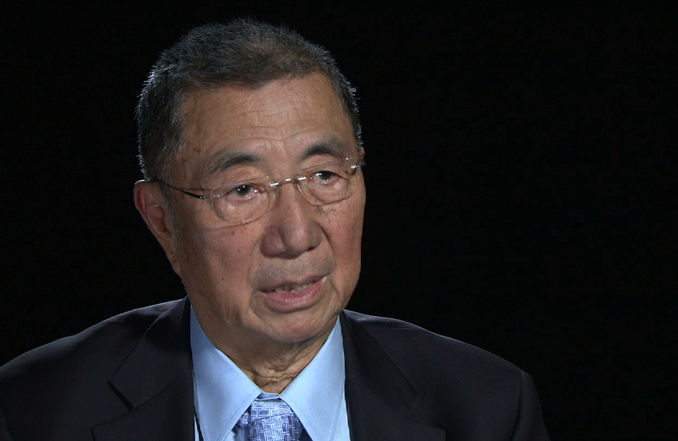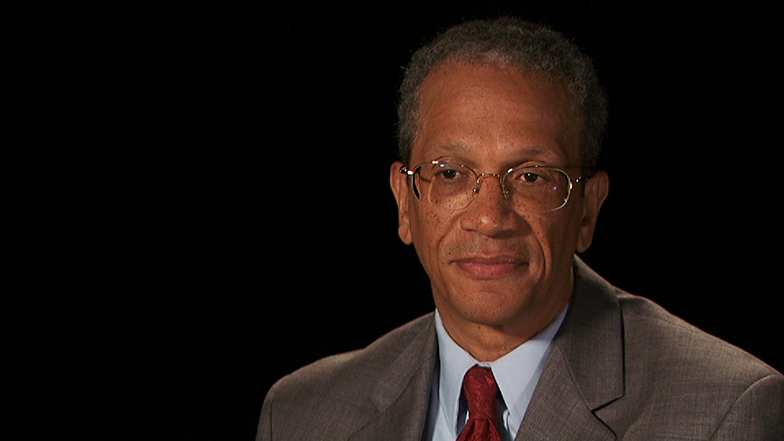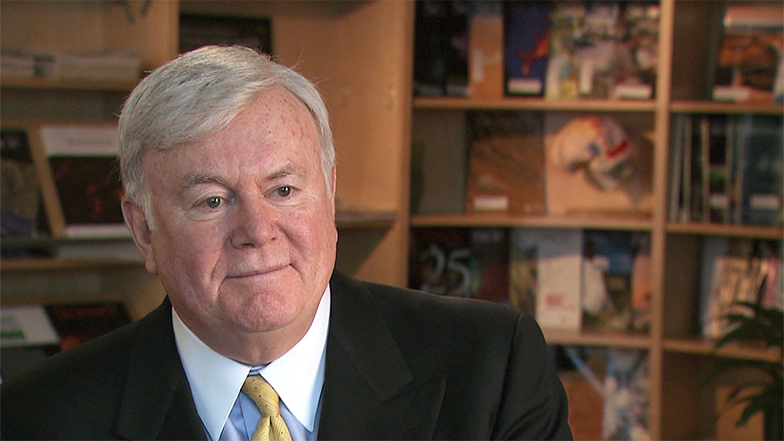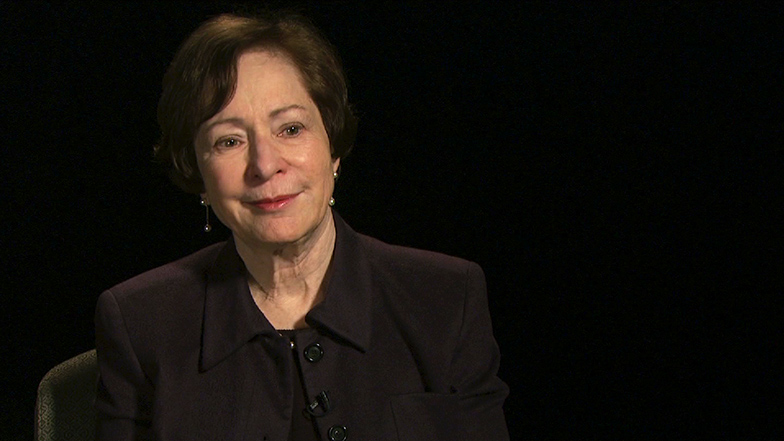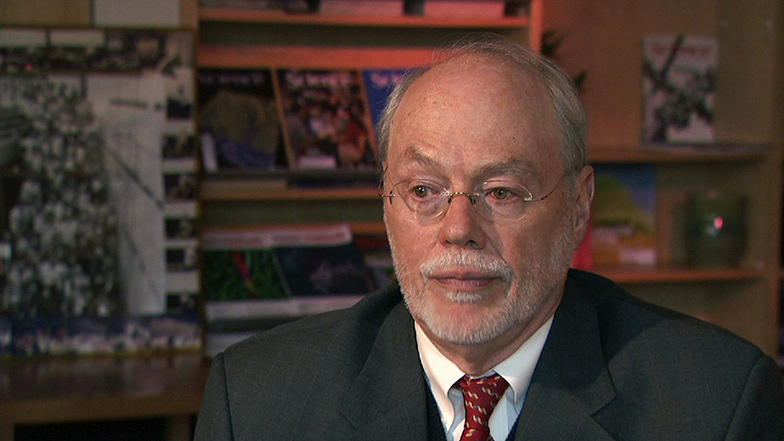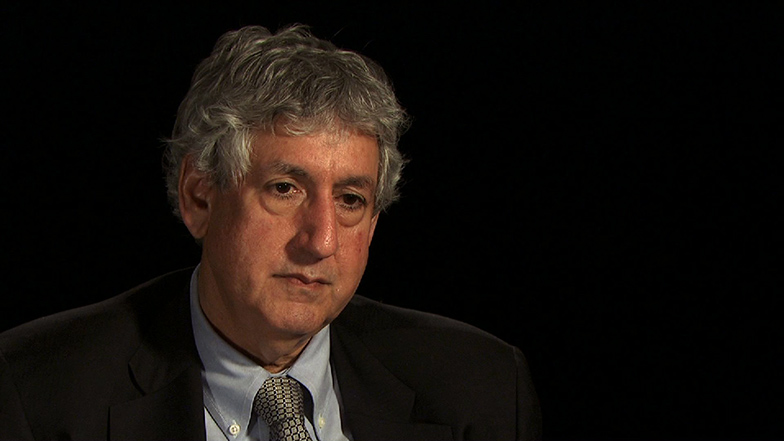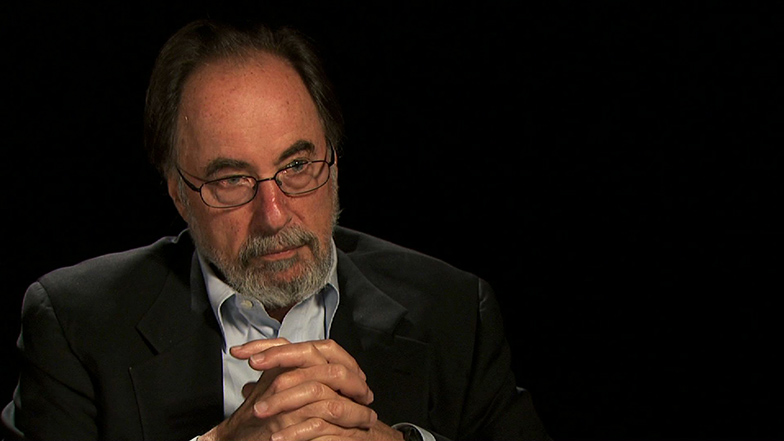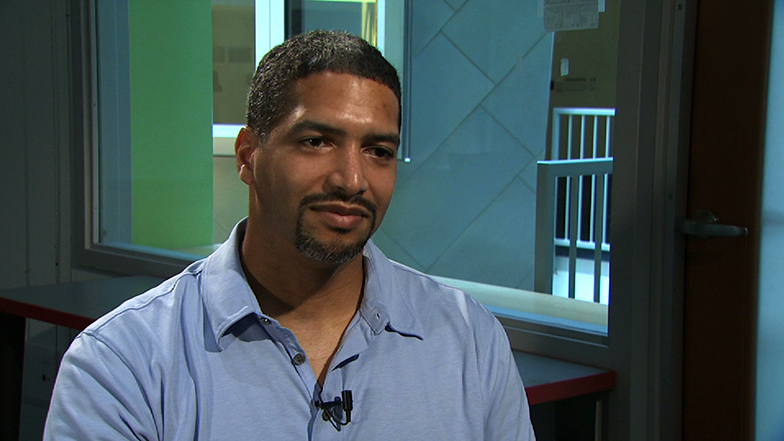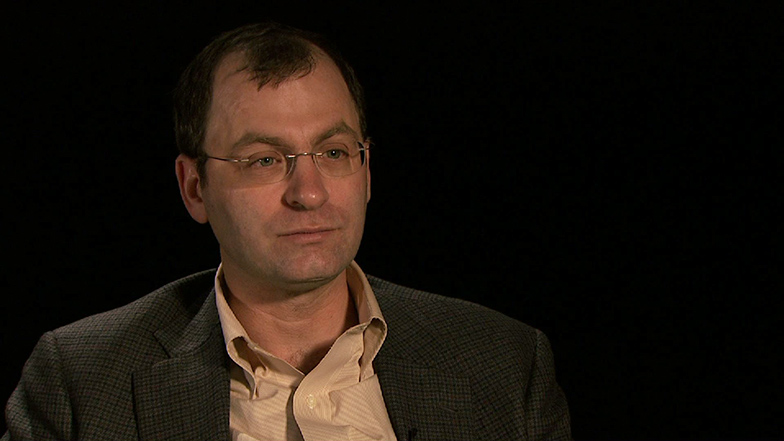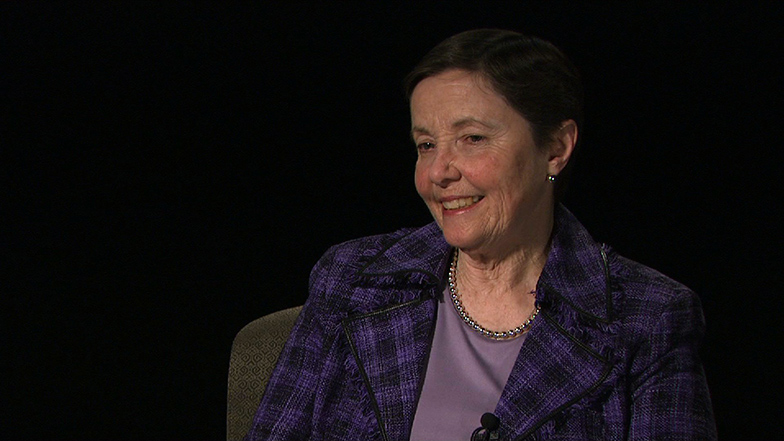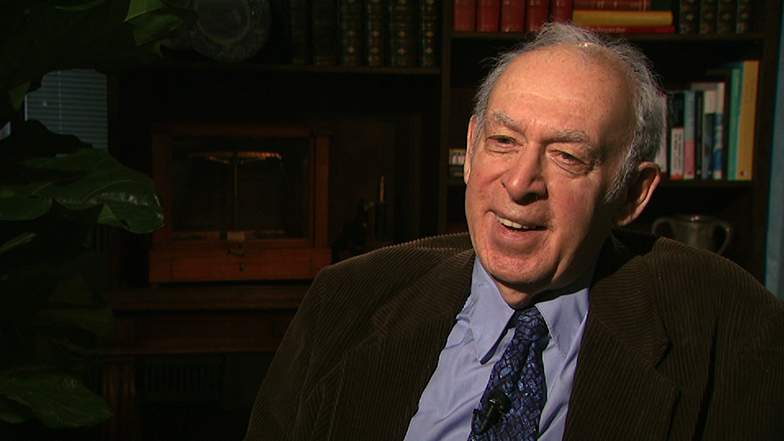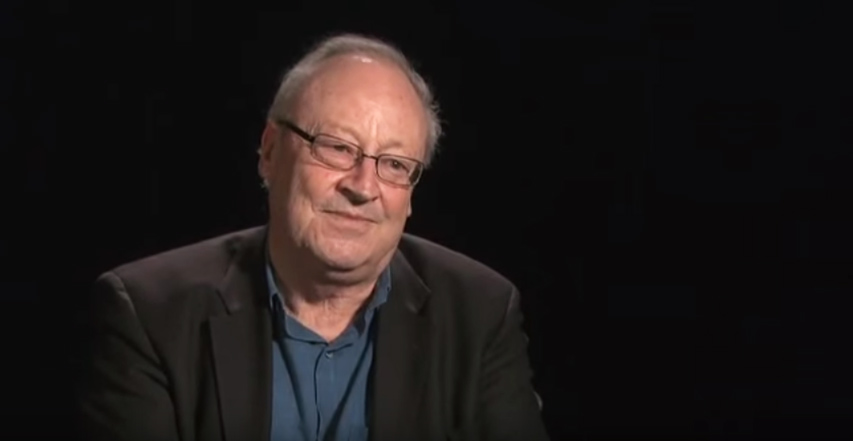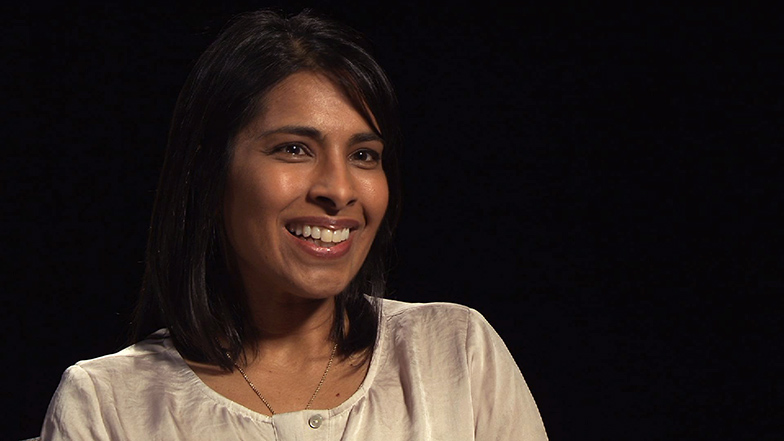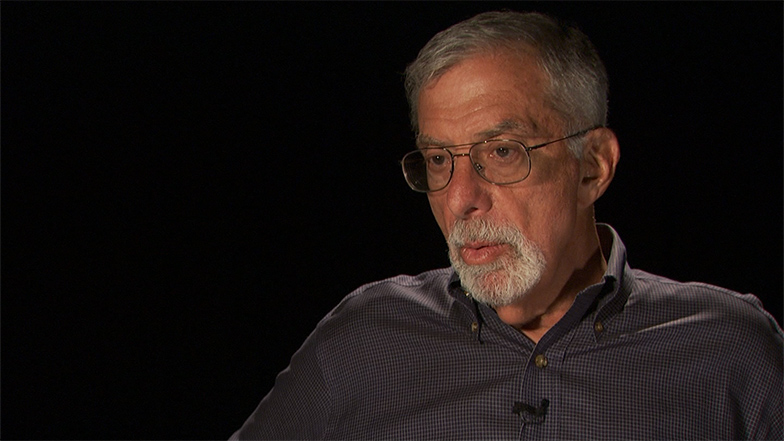Shigeru Miyagawa
INTERVIEWER: I'd like to start out if you can tell me where you were born? Where you grew up?
MIYAGAWA: I was born in Japan. And I came to this country as a child when I was 10. And this was in the 1960s. My father was a physics professor. And he took a leave of absence from the University of Tokyo and we came to this country. The plan was to stay here for three years and then go back. That plan has now been delayed by almost 50 years, so I'm not sure when we're going to get to it.
INTERVIEWER:Were there any particular experiences when you were growing up that you think have really influenced your career path?
MIYAGAWA: We eventually ended up in Alabama in the late 1960s. And this was a time of great upheaval in this country. The civil rights movement was happening around me. The John F. Kennedy assassination had occurred just after I arrived here. And so all the history was taking place which now we read about in the history books. I was too young to take it all in. But it did make me think, as I was growing up, about all that I now remember about that time, of people really fighting for rights and justice. And that's stayed with me to this day.
What I do recall about that time was that I really missed Japan. Now, this was a state that did not have many foreigners. There were no Japanese other than my family. There was no Japanese food. And the only person who appeared to be Japanese was Mr. Sulu on Star Trek, played by George Takei. And so I watched that every week. And so, this idea of missing Japan as a child really stayed with me. I still miss Japan when I'm here. But now, as an adult, I go back to Japan. I go back frequently. What happens is that, as soon as I arrive in Tokyo, I start missing Boston. It's the fate of a multicultural person. And that has really defined a lot of what I do in my career. To try to bring in different perspectives on things.
And as a multicultural person, you're not quite there. Because there's a part of you that's always longing for the other place. And that distance, I think, gives you a perspective, a different perspective, that's important in my work.
INTERVIEWER: So what made you decide to attend the International Christian University in Tokyo as a college?
MIYAGAWA: After coming to the US, and eventually ending up in Alabama-- and I was there through junior high school and high school-- I decided that I really needed to go back to Japan. That it was a part of me that I had, in a sense, denied, in trying to become an American. But there was a point in high school when I really felt that I needed to do justice to my Japanese side. And so I decided to look for an opportunity to study in Japan. And ICU was a university, a very fine university which allowed Japanese abroad to apply as an American institution, instead of going through the rigorous examination that they have in Japan.
INTERVIEWER: When you went there, did you feel like you fit in?
MIYAGAWA: I remember stepping off the plane to this day, and suddenly, for the first time, being surrounded by thousands of Japanese. And all of a sudden, I was home in my visa country. But it's a funny thing. As I became more used to the life, I realized that I wasn't all Japanese. And there are things that I felt, that I observed, that, I knew was different from someone who had grown up completely in Japan.
INTERVIEWER: Do you want to talk about any those in particular, or give an example?
MIYAGAWA: Well the idea of just simple things like raising my hand in class frequently, which is not something that the Japanese did back then. I think they do it much more now, I noticed. But the asking questions and giving my own opinions. And the Japanese do that, OK, but I think there's a way in which Americans do it, that's more vocal, much more upfront, in some ways more aggressive. And that part I had to learn to moderate, to fit into the Japanese society.
INTERVIEWER: And yet, you decided to come back then to do your postgrad, your doctoral work. What decision-making did you go through to get back here?
MIYAGAWA: I knew that I always wanted to come back to the US. I wasn't sure when I was going to come back. We have this pattern of planning something and then letting it delay for 50 years as our return to Japan has been. And my return to the US was delayed by several years, but I knew that I wanted to come back. And I knew that I wanted to study linguistics, and eventually to teach at an academic institution here.
INTERVIEWER: Why did you chose the University of Arizona?
MIYAGAWA: It's a very interesting question. I applied to many, many institutions, and I was accepted to all of them. And I chose one university which I actually didn't know much about. But it happened to have a professor by the name of Adrian Akmajian, who's actually a graduate of MIT, whose books I really admired. And I really wanted to study with him. And so it was a big risk. But I took it, and I'm glad I did. I learned a great deal from Adrian. And I think, in many ways, the reason why I am here today doing what I'm doing is because of the decision that I made.
INTERVIEWER: Did the two of you talk about MIT?
MIYAGAWA: A lot. Yes. He was a PhD from MIT, and he said that eventually I should go for postdoc at MIT. And he laid the groundwork for making that possible. And in 1981 and 1982, I was a postdoc here. '82, '83. I was a postdoc at MIT in the linguistics department. That's when I got to know people like Noam Chomsky and Ken Fayo. Ken was my supervisor. And that eventually, 10 years later, led to my coming to MIT as a faculty member.
INTERVIEWER: What was it, or is it, about linguistics that drew you? Why that particular field?
MIYAGAWA: I began by studying math and the sciences. That's what I was interested in. But then, my father is a physicist. And there was a part of me that wanted to do something different. And so, I actually walked across campus. I remember doing this, to the other end, and I started to study literature. But I still missed science and math. And what I discovered was, there's this discipline called linguistics, that is a scientific study of human language. And that was just the perfect combination for me.
INTERVIEWER: Tell me about after you did the postdoctoral work at MIT? Those years before you came back to MIT? Fill in that hole for me, and what you were doing?
MIYAGAWA: I was at Ohio State as an assistant professor. And then eventually, associate professor and head of my department at Ohio State. And I was ready to finish up my career at Ohio State, in Columbus, Ohio.
I think MIT was probably the only institution that I was willing to move to. Because I was perfectly happy. We created a PhD program in East Asian linguistics. I had 20 graduate students. And we had a very vibrant language program. And I learned a great deal by working there. And so it was a wonderful time. My first phase of my career. Which really laid the groundwork for the work here at MIT, both in linguistics and also in language education.
INTERVIEWER: And what was it about MIT that made you decide to make the move?
MIYAGAWA: When I was a postdoc here, what I found was that the linguistics department here was the top department in the world. And people who were very open to discussions at the highest level. And we would do this in the hallways. We would do this in the offices. And for that one year, I was literally doing linguistics from the time I woke up until the time I went to sleep. And it was one of the most wonderful years of my career.
INTERVIEWER: Do you remember what some of your first impressions were at MIT? The classes? Or the students? Or the environment?
MIYAGAWA: Yes. I do remember what it was like when I first came to MIT. I was quite amazed at the intensity of the place. It's a very intense place. It's intense because people are so fully engaged in their work. And they're so committed to doing absolutely the best possible work. They are not following the field. They are leading the field. And you feel that. We are at the leading edge of whatever we do. There's also the sense that we are here to serve not just the students, but also the world. We're here to fix broken things about the world. We're trying to make it better. And there's a real sense that, as a faculty, we have a commitment to doing that. But it is a very intense place.
INTERVIEWER: How do you see that as a benefit to you? How has that been a benefit to you personally?
MIYAGAWA: I have been able to do work at MIT that I don't think I could have done anywhere else. I have been challenged by my colleagues, by my graduate students. For example, this book that I'm publishing next month from MIT Press. It's a book about linguistics. I don't think that I could have written that book anywhere else. And I'm just so happy that I have been given the privilege to work in an environment where I'm challenged and I'm pushed to do my best with whatever gifts and abilities I've been given.
INTERVIEWER: So there's something about that-- it sounds like the competitive spirit of the place-- that keeps you on your toes, I guess.
MIYAGAWA: What's important to understand about MIT is that it is very competitive. But also it's also a very supportive environment. I have found this to be the case from the president down. And my colleagues are very supportive. My graduate students are supportive. Yes, it's competitive. Yes, it's intense. But also, we're all in it. And I think there's a communal sense that in order to do what we have to do here, that we have to also be supportive of each other.
INTERVIEWER: So one of the early projects you worked on was JP Net. Can you tell me how that idea was born?
MIYAGAWA: You know, thinking back on it, JP Net was one of the craziest things that I've done. I'm glad I did it. But in hindsight, had I known how hard it was going to be, I'm not sure that I would have done it. But you can say that about so many things that we do here at MIT. JP Net addressed a simple problem. And this has to do with language education, and particularly, Japanese language education. We've known for many years that Japanese language is one of the most difficult foreign languages for an English-speaker to learn. Possibly the most difficult. We have a good statistics that show that for an English-speaker to master Japanese takes about three and a half times as much time as Spanish. So Spanish times 3.5 equals Japanese. And the challenge that I took on was to see if I can take the 3.5 and reduce it down to 3.2, 3.0, whatever works. So I started to think about this. And I began by observing how MIT students were studying Japanese.
What I observed was that-- I remember one student trying to find out how to read a Chinese character, a kanji, in his reading. And I actually timed him. And he went from one dictionary to another dictionary. It took him about five minutes to look up one character. It was unusual, but not completely rare. And so what I thought was, what if we could put everything at the student's fingertips, so that a student could simply, as we say today, click and find the right information.
And at the time, this was in 1993, there was this internet that was emerging. And what I heard about it seemed like a potential solution to the problem. But you have to understand that this was 1993, before the Netscape browser. And so what we had to do to make any of this possible was to really work on user interface, which took all of our time. That's the part now I think was crazy for us to have done, but we did it. We did it. We, fortunately, received funding from the US Department of Education, from Canon, and others, and we were able to put the entire Japanese language on the internet. Back in 1993, 1994. Before the Netscape browser. And it did address some of those issues of time-consuming tasks. So it was a great experiment. And I believe it was probably the first time that an entire academic program was put on the internet.
INTERVIEWER: Let me first ask, what level of success did you find that JP Net was responsible for?
MIYAGAWA: It very quickly changed the behavior of our students' learning. And so, one thing that I noticed right away was that a lot of the mechanical things that we did in class, like showing students how to write a kanji, was taken out. And they were able to access the internet version of our program, and bring that learning into the classroom. So that in the classroom, the teachers were able to focus on what you really had to do, human to human. Human to human interaction, which you cannot do with a machine. Not yet, anyway.
The first year that we changed over to JP Net, we asked the students what do you think? And the students thought this was really interesting. Very cool. They had never seen anything like it. By the third year, we asked the same question, and the students would look at me and say, why are you asking me this question? How else would you do it? Which was great. It became part of the fabric of the learning environment, which was exactly what we wanted to do.
INTERVIEWER: So there must be a connection. So how did you move from JP Net to OpenCourseWare?
MIYAGAWA: So, OpenCourseWare is this idea of putting the entire MIT courseware, teaching materials, on the Web. And there was a long lag between JP Net and OpenCourseWare. But I was very happy to have served on the committee that eventually proposed OpenCourseWare. OpenCourseWare represents, in many ways, what MIT really is.
We took what was widely accepted at the time and turned it on its head. And what came out of it was something not just different, but we changed the rules of the game. In the year 2000-- remember, this was still the dotcom era-- many institutions were launching ventures to sell their teaching materials and other valuable assets that they had. We took a look at that model. We studied it very carefully, but we decided that that was not the model for us. And instead, we decided that what's right for MIT, the right model, is to give away our teaching materials.
And that was a very interesting decision that we made. It changed the landscape. Because instead of selling the teaching materials as an educational institution, we said, no, it's better to give it away. It's better to give it away, to share that with the rest of the world.
And you know, thinking back on it, that OpenCourseWare idea didn't just materialize out of thin air. It really came from deep within the fundamental values that we hold as MIT faculty about knowledge. We take it for granted that knowledge is better when it's shared openly and freely. OpenCourseWare didn't materialize out of thin air. It came out of the fundamental values that we hold, as MIT faculty, about knowledge. Knowledge is better when it's open and it's shared freely. And we take the opportunity, whenever we can, of helping society at large. And this was a great opportunity to, as educators at MIT, to share with the rest of the world what we do at MIT in our educational endeavors.
INTERVIEWER: Now, I know from my reading that coming to that decision was a difficult one, and there was a lot of controversy, and a lot of discussion back and forth. Can you talk a little bit about some of the concerns that people raised? Those who were opposed to offering the course materials for free?
MIYAGAWA: One concern that came up right away about OpenCourseWare, and this came both from faculty and also from students-- particularly from students-- was, when students are paying so much money in tuition, why is MIT now going to give away our education for free? That is a misunderstanding that we had to clear up right away. Through OpenCourseWare, we are not offering MIT education. MIT education is that, as a high school student, you're chosen to come to MIT, and you live here in the dormitories in East Campus and Senior House and so forth. And you learn from your professors and from your fellow students. You interact with people here. And through all of that, you receive an MIT education. Teaching materials is a small portion of that. And it's that small portion we proposed to offer through OpenCourseWare.
INTERVIEWER: And what were the concerns that some faculty raised?
MIYAGAWA: One concern that faculty raised was the burden that it would place on them to have to create teaching materials to launch on OpenCourseWare. And so for that, we created this very extensive and very well-designed organization, the OpenCourseWare organization, which took in faculty teaching materials and redesigned it for OpenCourseWare.
Another concern that some faculty members voiced was that once their material is launched on OpenCourseWare, they fear that they'll be inundated with questions from all the world. And so for this, the OpenCourseWare organization has offered to mediate any communication from the outside. And that has worked.
INTERVIEWER: Do you get a lot of questions from the outside?
MIYAGAWA: We do get some. But not as much as we had anticipated. The kinds of communication that we get from outside, the common kinds, are people thanking us for offering all of this valuable material for free and openly. We get emails from all over the world, and anecdotes of how they're using MIT's OpenCourseWare. And so, for example, a student in Nigeria who was studying material science wrote us some time ago, and told us that in his material science course in Nigeria, there were no lecture notes. And so he went to MIT OpenCourseWare, to the material science section, and found lecture notes that were pertinent to the study in his class. And he found that to be tremendously helpful.
INTERVIEWER: Are there ways in which OpenCourseWare has met your expectations, and ways in which it didn't meet your expectations?
MIYAGAWA: There are many ways in which OpenCourseWare has exceeded my expectations. For example, we understand that there are now about a million people accessing MIT OpenCourseWare every month, from all over the world. All over the world. And this is beyond our wildest dreams. We didn't know, going in, how much it would be accessed. But to know that there are a million people out there who are accessing it every month is just remarkable. There's nothing else at MIT this big.
The global OpenCourseWare consortium which was launched several years ago, which encourages other institutions around the world to start their own OpenCourseWare. There are now about 250 institutions around the world that have committed to launching their OpenCourseWare. And the number is increasing every week. So this has exceeded my expectations.
Within MIT, we just learned that something like 85 percent of the faculty, MIT faculty, are not only using OpenCourseWare with their own OpenCourseWare site, but they're also looking at other faculty members' OpenCourseWare courses. And also taking materials from other faculty members' courses. This is actually quite remarkable. What this means is that these faculty members are looking at different models of teaching, and not just their own.
MIT students tell us that when they were in high school, they were looking at OpenCourseWare. About half of the freshman class told us they were looking at OpenCourseWare. And many of them told us that OpenCourseWare was a significant factor in school choice. That's remarkable. And so I'm just amazed at how much OpenCourseWare has developed in ways that I never, never dreamed of.
INTERVIEWER: You must feel a little like a proud father.
MIYAGAWA: I do. I do. You know, all of us who were are on that committee, who had this privilege-- I mean, the stars lined up. Really did. It really did. And it was so much fun. And it continues to be fun today.
INTERVIEWER: Do you have any sort of expectation on where it will go in the future? 10 years or 20 years down the road?
MIYAGAWA: If you look at this figure, that many of the MIT freshmen were looking at OpenCourseWare in high school, and that so many of them said that OpenCourseWare had a significant impact on school choice that they came to MIT, when you look at just that figure, it seems to me that no institution can afford not to do OpenCourseWare. When you think about it, it's pretty obvious why I think students, while they were in high school, found OpenCourseWare to be so helpful. Before OpenCourseWare, students chose schools based on reputation and prestige. But they couldn't really look at the actual product that they were going to buy into. Four years of their life, between 18 and 22, a very precious time. Their family was going to invest a large sum of money to have their children be educated. For the first time, you can see what it's going to be like. And I imagine that students appreciated being able to see that. And I imagine that many students felt that they could do this. That they could do this. They could do 60-01 when they looked at it. And so I think this is the reason why so many students were attracted to MIT.
We call it OpenCourseWare now. We gave it-- we give it a special name. But 10 years from now, I don't think there will be a special name. If you're an academic institution, then you're going to do this.
INTERVIEWER: Certainly more informative than looking through faculty bios in a book, which is how I did it.
MIYAGAWA: That's how we all did it.
INTERVIEWER: Is there anything else about OCW you think is important to say?
MIYAGAWA: I think I've said what I wanted to say. For me, personally, it's been just a remarkable experience of having been involved with that committee, which initially was charged with proposing, basically, something like an MIT.com. This was the dotcom era. And we went in trying to build a business model.
In fact, we built many, many business models trying to come up with a plausible, a credible model. And we did a lot of study of other ventures out there. And we eventually decided that was not the right thing to do, and instead, we should give it away. And that moment when we decided that we should give it away, there was something in the room. There was something in that room that there was something very deep about MIT that was present in that room. And I felt it. I think everyone else felt it. And it was so much fun. It was so much fun.
INTERVIEWER: Another project that you were involved in was Star Festival. Can you talk a little bit about how that came about?
MIYAGAWA: Star Festival was the very first major multimedia project that I undertook in MIT. I came to MIT in 1991, and very soon after that, I started this project. I started this project because I wanted to see what new technologies, new media technologies that I found at MIT could do for the study of language and culture. Language part became JP Net. Culture part became Star Festival.
Going in, I did not have any big ambition to do a big project. I felt that I would try it for a couple of years just to become familiar with what multimedia was. But so typical of MIT that we went to Japan. I went with a graduate of the Media Lab. A wonderful documentary maker, and we filmed in Japan. And what we came up with-- we went to my hometown. And what we came up with was quite compelling. It was a way to tell a story. To bring multiple perspectives about how you can understand Japan. Japan is not just this one thing. But there are many, many stories. Many, many perspectives. And multimedia, I understood, allowed you to do that. And so we came back with this wonderful footage. And people started to look at it. And they came out of the woodwork. These amazing people.
I was able to hire someone who was directing a film in Hollywood-- an MIT graduate at the American Film Institute. She came on board and she became the creative director. And so many other people, because we had something so wonderful to begin with. And so, right away, the project became something bigger than what I initially started with. And I began to understand what it is that we were trying to do. What I wanted to do was to tell my own story of being a multicultural person, and being proud of not just being an American but also being that someone else.
When I visited schools in the Boston public school system, I found kids from all over the place, from Russia, from China, from Brazil, they're all learning to be American. But they're not being exposed to their first culture, and so they couldn't talk about it. There was no way to talk about it. I thought it would be great to create this multimedia project that would allow kids to talk about their other culture, whatever that was. And to be proud of it. And multimedia was the perfect vehicle for doing that, because you can bring your own perspective into it. It's not someone else's perspective telling you this is the way it is. You can pick and choose what you want to tell about a story. You can go inside the media. This is what interactive media is. You can go inside the media and choose your own perspective, and tell your own story. And Star Festival ended up being adopted by, I think, over 100 schools around the country.
The best part of it though, and this is the fun part, was that because of this Hollywood connection, my creative director said that we had to hire someone to play me. And she was able to get George Takei, who played Mr. Sulu in Star Trek, who was my one connection to Japan when I was growing up in Alabama. And so Mr. Takei, George, played me in Star Festival. Now, that is a blast. And we had such a fun time working with him in Hollywood.
INTERVIEWER: Great poetic justice in that. Did you tell him how important he had been to you?
MIYAGAWA: I did. I did. And he was very pleased. And after that, we invited him to be an artist in residence here at MIT for a few days. And he came to talk about things about him that we didn't know about. He was born in the internment camps during the war. As you know, Asian-Americans, Japanese-Americans, during the war, who were living on the West Coast were put in internment camps. And he was born in an internment camp. And he, still to this day, has a cause. And he talks about that. The injustice that was done. And that voice, I think, he gave in Star Festival a voice that included the historical injustice. That experience of him having grown up in the internment camps allowed him to give a voice to Star Festival of someone who is not fully part of this country growing up as an American. But who was proud also of another culture that I had. And I was so pleased to have him be part of the program.
INTERVIEWER: How did it grow from this idea that you originally had into something that is used in more than 100 schools nationwide?
MIYAGAWA: Star Festival, I think, is a very good example of what happens at MIT when you have an interesting project. More and more amazing people join the project. And we were fortunate to be able to raise funds to support these people. We had this person who was directing a film in Hollywood. We had musicians. We had architects who were building virtual models of Japanese temples. Because we filmed in a Japanese temple, and also a shrine in my hometown. And programmers who are able to do amazing things with multimedia medium, which was still new at the time. At one point, I think we had something like 10 people working on what I thought was a very small project. And so when you have 10 amazing people, it becomes something bigger than what you started out with.
And so, over a period of three to four years, we started with what was a small and simple story to a very, very elaborate, interactive media. And so we were looking for a way to use this. Although the project changed, I did not change my commitment to use of interactive media for education. And when I showed it to some elementary school teachers in the Boston school system, they said, we want to use this. So my goodness, I thought it's university-level. They said, no, no. We want to use this. And they said, we want to use this in the kindergarten. My goodness, kindergarten.
And so we quickly learned that there's some opportunity here if we add a few things. A curriculum for teachers to use. And so I then went to learn what it's like to build a curriculum for pre-college. And that took a couple of years. And we tested it in the Boston public school system for couple of years. And it was used in the kindergarten, of all places. Amazing. Just amazing. And I saw amazing things being done with that program. That I never dreamed of. I'd never dreamed of.
INTERVIEWER: Well, they're fearless at that age.
MIYAGAWA: They really are. They really are.
INTERVIEWER: So let's go back. You wanted to say something about your missing Japan and your connection with your students.
MIYAGAWA: Yeah. So what I recall from my childhood in Alabama was that I really missed Japan. There was no Japanese food. There were no Japanese. And, of course, Mr. Sulu on Star Trek was the only Japanese-looking person. But, you know, as an adult, I still miss Japan. And I go back to Japan fairly frequently now on business. And what happens is, as soon as I arrive in Japan, I begin missing Boston. And this is the fate of a multicultural person. You know, you're in one place. You're missing the other.
What I've found is that there are now more and more students in MIT who have that kind of background. So students who were born in Hong Kong, in mainland China, in Taiwan, Thailand, Brazil, in Europe, who came to this country when they were young. And they are very much American, because they came here when they were young. But you can tell that they have a longing for their first country, as well. When they do a course project in one of my courses, they often choose a topic that reflects something about their first country. And so, you're never in one place as a multicultural person, because you have this small longing. There's a small part of you that's longing for the other place. But this distance also gives you this ability to look at things from a different perspective. And I think this is very important now. I'm so glad that I see more and more students with this kind of background.
President Obama said recently that the world's getting smaller, but the diversity greater. As we move forward, we're moving into a world where it's really important that we're able to bring different perspectives on a problem, not just the function. But to fix things that are broken about this world. And MIT students are exactly that. They're going to go out there. They're going to fix what's broken. And the students who have this kind of multicultural background are going to be able to bring this multi perspective on these problems. And I think that's going to be absolutely important and critical in their careers.
INTERVIEWER: In the 20 years or so that you've been here, how have you seen multiculturalism change on the MIT campus?
MIYAGAWA: There have been so many changes since I've come to MIT in 1991. And so the student body has changed, and changed dramatically. We have more women now. And with that, we have more diversity of fields of study. We not only have computer science, but we have biology. We have management. We have material science. There's a more even distribution of courses of study that students take on.
In terms of ethnic, racial diversity we have a greater diversity, and essence as well. More students were born in another country who came as a child. And as an American, they grew up here, and they come to MIT, but they also have this other country that they bring with them. I think it's a more humane place now than before, because of this diversity and more tolerance.
INTERVIEWER: Are there specific strengths or weaknesses you could point to, to the diversity or multiculturalism on campus now?
MIYAGAWA: The strength is that from diversity, we learn. We learn from each other. We learn what's it like to be someone other than who you are. And this is part of the education. It has to be part of the education. It's not just in the classroom, banging away at your computer, but part of your education here is to learn from your fellow classmates of what the rest of the world is like. With more diversity, I think one must learn to tolerate differences. And this is a challenge. This is a challenge for all students to be more flexible in what they're able to accept about the world. It's not just the standard American way that the world functions. There are different religions, there are different ethnic groups, there are different languages, and different cultures. And we must learn to tolerate and appreciate differences. And this is a challenge. It's a challenge not just for MIT, but for the entire world.
INTERVIEWER: So why don't we start talking about Visualizing Cultures. Since that seems to be a nice transition. How did that idea come about?
MIYAGAWA: Visualizing Cultures is my most recent, and, in many ways, the most ambitious project that I have taken on. We started this eight years ago. And in fact, we started it with OpenCourseWare. I knew the OpenCourseWare was about to be launched. And I wanted to take advantage of this, what I suspected was going to be, a major, new platform for education. And so my colleague, professor John Dower in history, an eminent Pulitzer Prize-winning historian of modern Japan, and I sat down, and over coffee we went over some things that were important to us, and things that we observed.
So history has traditionally been done by studying text, written text. That's important and we've learned a great deal. But because of this focus on the written text, we have ignored visual materials that we know are out there that are historically important. And so we said, why don't we start looking at those.
We also knew that young people were getting more and more of their information through visual materials because of the internet. And we felt that it would be important to educate young people on how to read visual materials. And not just to react emotionally to them. And so that was the idea. And we started with a unit on Commodore Matthew Perry's arrival in Japan in 1853 and 1854. And we start to collect material in Japan and in the US. And We eventually came up with a huge unit, where according to Professor Dower we have more visual materials in one place than any other place in the world. And we learned a great deal by having done that unit.
INTERVIEWER: And tell me what you learned.
MIYAGAWA: What we learned is that you can, in fact, learn a great deal from visual materials that were ignored before, because people were focused on the written text. We learned, for example, that the Japanese and the Americans came together in 1853. And from the visual materials, from the American artists who are depicting those events, and from the Japanese artists who are depicting the same events, that the perspectives are very different of the same event.
The black ships that Commodore Matthew Perry went on were depicted in this wonderful painting that we found in the Chicago Historical Society. You know, Commodore Perry was going to save the heathens in this very typical rendition of the manifest destiny. The same black ships were drawn by the Japanese artists as the devil coming to Japan to do harm. But as we looked at paintings with block prints, and lithographs, as events unfolded, what we saw were two people, the Japanese and the Americans, really curious, genuinely curious, about each other. And there was a sense of respect by each other. I think this is what made it work. The curiosity and the sense of respect. And we saw that in both sets of visuals. And we were quite amazed by it. You know, there's this incredible, historical, momentous, event. As someone pointed out, not a single person was killed. It was an amazing event.
INTERVIEWER: And certainly, those sorts of observations would never come from reading text?
MIYAGAWA: That's correct. That's correct. And having learned from that, we decided that visual materials are important. And where do we find those visual materials? They are in museums. And so we talked to the Boston Museum of Fine Arts, to the Smithsonian, to major museums. And we got them to agree to provide visual materials to be used by Visualizing Cultures, which was offered through OpenCourseWare. And so these visual materials had to be licensed under Creative Commons, so that they can be made available for free, and openly. And so that's what we did. And now we have thousands and thousands of visual materials through OpenCourseWare Visualizing Cultures that are available to the world for educational use, freely and openly.
INTERVIEWER: I wanted to ask you about the incident that you ran into with Visualizing Cultures, with the image of the Japanese soldiers. Can you tell me that story?
MIYAGAWA: One of the units that we have in Visualizing Cultures is about the Sino-Japanese war. It was the first major war that the Japanese engaged in after Japan opened up, and began to modernize. There are paintings by the Japanese depicting battles between the Japanese and the Chinese. And the paintings are very difficult images. These are propaganda images for consumption within Japan. And we felt that they are very important for showing how visual materials are used as propaganda to advance a nation's agenda. And so, there are many, many different types. And Professor Dower, who wrote the text, chose those images, contextualized these paintings as being horrific, and even racist, in part. And he made it clear that we were not promoting anything about what's inside the image. But this is the internet. It was on OpenCourseWare. And some people simply looked at the image, and ignored the context. And began to criticize what we are doing.
It was a very big learning experience for us. And I think it's something that we all have to learn to do in this age of the internet and openess. It's not just that we make things available and it's useful, and they're wonderful stories. They are difficult things that we have to face. We talked with the Chinese graduate students here at MIT and they eventually sent out messages saying this is a terrible mistake. And the attacks, and they were attacks, quite fierce attacks, some of them, they stopped.
I must say, though, that the MIT administration, from the president down, was completely supportive of us, from the beginning, and President Huckfield came up with this very strong statement in support of our project. And that made it possible to re-launch Visualizing Cultures without changing anything. We did put a layer on top that said that some of the visuals are difficult, but they're there for historical research. So it was a very difficult incident. One that we learned from, and we continue to learn from today.
INTERVIEWER: One of the interesting things to me is, there are many things like that. I've seen World War I posters. I know someone who has a collection of them. And there are horrible images of Germans slaughtering babies in these posters. And what seems to be the difference is that yours happen to be on the internet, and mine were seen in a smaller venue. Do you see this as an academic freedom issue?
MIYAGAWA: The issues having to do with those images have to do with academic freedom, but they also have to do with how we present images on the Web in a way that is different from presenting those images in a book. Images that are presented in a book are such that the reader selects that book, you decide to read this book. You have some notion, most readers, that you may run into difficult images. With the internet, it's a little different. And so, the question is, do we not put those images up? These are difficult questions. We struggled with those issues, and we decided that it's important to have those images. It's important for the viewers to understand that there's a context here. The context of historical research and study. And that we all have to decide for ourselves exactly what this represents. We do give context, one way of interpreting that.
But this is going to the one of the big issues in education and the internet. Openness versus censorship. Openness versus sensitivity. These are not easy issues. I don't have the answer to these issues. We have to struggle with them. We have to struggle with these issues in order to try to come to some agreement, some idea that we can serve best our students. And challenge them to learn, and learn in a constructive manner, without inciting all this violence. One of the big issues in internet and education going forward.
INTERVIEWER: So you've created a lot of innovative education programs. Was it a surprise when you were named one of the 20 Shapers of the Future?
MIYAGAWA: That came as a complete surprise. And, of course, I was very pleased to have been named as one of 20 Shapers of the Future. I'm not quite sure what that means, but it sounds great.
INTERVIEWER: Sounds like a lot of responsibility.
MIYAGAWA: It does, doesn't it? Yes, it does. I must say, though, that this wouldn't have been possible if I were not at MIT. The resources that I'm given here, the challenges, and just the culture of innovation that you find here. That's what made it possible. And without that, I would be probably doing something else. And that's a very important point that I always remind myself. It's not just me. It's me and MIT, and my students, and my colleagues. Everything's a collaboration here. Someone may have his or her name on something, but everything is a collaboration here. And that's the culture of MIT. And that's what's so wonderful about MIT.
INTERVIEWER: I wanted to ask you a little bit about your particular areas of research in linguistics. I have to tell you that I tried to read some of the papers, and I just didn't have the background. But tell me about-- explain to me syntactic theory.
MIYAGAWA: OK. So the kind of linguistics that I do, and that is my speciality, is a theory that was really developed here at MIT in the '50s by Noam Chomsky and his students. And it's an idea that goes back further than that, is that there are lots of human languages. Lots of human language. UNESCO has a study that says there are about 6,000 languages. We think that underestimates the number by several times, maybe even more. So there are tens of thousands of human languages around the world possibly.
But underlying all that is a uniform system, a universal grammar, which allows virtually every human being to learn a human language by the time you are four or five years old. By the time you are four or five years old, you pretty much have an entire system. You still have words to learn, but the system that allows you to use those words, in sentences, you have that by the time you are four. And this is true across the world. It doesn't matter what language it is. Swahili, English, Chinese, Japanese, Spanish, it doesn't matter. You get it. And it's about around the same age that all human beings master their language.
And the hypothesis is that there is this universal system, and some of it, possibly, hardwired into our brain. It is somehow genetically encoded, and so that we go through the same pathway of learning our first language, no matter what language that is. And so, as a linguist, in this way of looking at human language, we want to know what that initial state is, before you actually start learning a particular human language, what is the initial state of universal grammar? What is it that you have as a human being that makes you a human being, because you're going to have a human language? And that's what we want to know. And that's the study that I do. And my colleagues here, and elsewhere, of looking at different languages. I look at Japanese.
But in this most recent book coming out with MIT Press, I also look at Romance languages, English, other Asian languages. Also I look at Bantu languages of Africa. I have a whole chapter on that.
And what you find is that English has its own internal logic. Japanese has its own internal logic. And the Bantu languages have their own internal logic. It's a beautiful logic that you see. And as you study it, you begin to uncover the logic. The research that I report on in my monograph is that the internal logics that you find in these different groups of languages, once you really start taking away the details, that they emerge as a single system. And that's my proposal in this monograph. And if I'm on the right track, maybe some of this may reflect that universal grammar. But that's a long way off from proving.
INTERVIEWER: The second area I read a little bit about was the ditransitive verbs. So how did you come to have an interest in that?
MIYAGAWA: Ditransitive verbs are verbs you find in every language. Like the verb "give." And we call it ditransitive because along with the subject, it has two other expressions. So, John gave a book to Mary. A book to Mary.
And what's intriguing about these verbs-- you have to understand that linguists are just intrigued by these things-- is that across many languages, you find, including English, that there's a different way, a second way, of expressing the same thought. So, the first way is, John gave Mary a book. But you can also say, John gave a book to Mary. OK. John gave a book to Mary, and John gave Mary a book. There's two ways of saying it. And the remarkable thing is that you find the two expressions across many, many languages.
And so the question is, why? Why do these verbs like "give", "send", have two ways of expression? And so I took a look at Japanese. And people said Japanese only has one of them. And so, of course, that was a challenge to me, because I was teaching this in graduate course. English has this. And so, I started to look. And, sure enough, if you create the right kinds of tests, and I came up with several different tests, empirical tests, it's like experimentation. You do experiments. I think I was able to detect the second way of expression, even in Japanese. So there seems to be something almost universal about the fact that ditransitive verbs come with two different ways of getting expressed.
And so why? Why does the human system have this way of allowing a speaker to say these expressions of giving and sending in two different ways? It was really intriguing. I spent three years doing this. And I plan to spend three more years looking at it. It is just so intriguing.
INTERVIEWER: There's no reason for it?
MIYAGAWA: Well, I think there are reasons. But they're technical reasons why these two expressions happen to be possible. You find it in Spanish. You find it in Japanese. You find it in-- it's just amazing. Across so many languages. It's not an accident. So much of language seems, at first, to be random. So this is what's intriguing about human language. So much of it seems random, and yet when you start to look, and look closely, and not just at English, but at Bantu languages, and Spanish, and Japanese, you begin to understand that it's not random at all.
It's very well ordered. It's very well organized. It's highly structured. And this is what intrigues us. Where did that come from? And what is it? What are these structures that we actually create in our head when we speak, and when we comprehend human language. It's quite intricate. And it's not random at all.
INTERVIEWER: No. And it never would occur to me-- my impression of language is that different languages had different construction. Like, sentences are very different. And French puts adjectives before and after depending on use. And it never occurred to me that there was such a fundamental commonality across the board.
MIYAGAWA: This is our theory. And of course, for linguists, instead of saying well, French puts adjective after the noun, you said, why? Why does that happen? And it's a challenge. And it has to do something with our congnative system. That in French you put the adjective after the verb, but in English, you put it before the verb. In some languages, you have an option. So, why?
INTERVIEWER: Your third area of research is the Altaic-- is that the right pronunciation-- in East Asian linguistics, in particular. Explain a little bit about your interest there.
MIYAGAWA: So Altaic languages are a group of languages you find in Central Asia, and also on the west side. Turkish, and on the eastern side, by theory, Korean and possibly also Japanese. But there's always a controversy about whether Japanese is genetically related to the rest of the Altaic languages. We know that, for example, English is related to many of the Romance languages, and Germanic languages. You can prove this. You can prove this. Japanese has been a little bit tricky. But typologically, Japanese is very, very, similar to, for example, Turkish.
And so I have a friend and a collegue, who is a very eminent Turkish linguist. And some years back we decided to form an annual conference where we encouraged people to submit abstracts on research that compares different Altaic languages, Turkish and Japanese, Korean and Mongolian, and so forth. We have been doing this now for six years. And it is now producing research that is truly comparative. We just finished a conference in Japan this year. And there are some papers, amazing papers, that compared Japanese and Turkish, ditransitive verbs, Japanese, Turkish, Korean and Mongolian. And so on. And it's becoming a community that comes together once a year in different parts of the world.
INTERVIEWER: So why don't we talk a little bit about some of the contributions that you've made to the field through the books that you've written. I don't know if you want to just say a little bit about each one? And maybe, if I could ask you, for each one, what made you decide to write that book, and what you think it contributed? So, the Oxford Handbook of Japanese Linguistics why don't we start with that one?
MIYAGAWA: Let's go back to my first book, 1989 book, Structure and Case Marking in Japanese. So that was my first book after I finished my dissertation. And it's very different from my dissertation. I wrote that book, in part, while I was a postdoc here at MIT. So it was my first big MIT influence on my work. What I wanted to do in that book was to apply the theory of the time, called government and binding theory, which had been developed by Chomsky and others in the late '70s and early '80s and which I learned while I was a postdoc here in 1982-`83.
I wanted to apply that theory to Japanese to see what things we can find, first about Japanese, and second about the theory itself. How we have to push the theory in order to incorporate what we find in Japanese. And I looked at a whole array of phenomenon in Japanese, quantifiers in Japanese, case marking in Japanese, I even looked at old Japanese of the 8th century, and how it changed. And how the theory could help us to explain the change that occured in Japanese from the 8th century to today. So that's what I did in my 1989 book.
The Oxford Handbook of Japanese Linguistics is a book that I co-edited with Mamoru Saito of Nagoya University who is a PhD from MIT. And there, what we wanted to do was to bring together some of the most recent research on Japanese within genitive grammar, and particularly by people who are in their mid-career. Not eminent, senior people, but people in the mid-career, because we wanted to encourage them and help them to expose their research to the rest of the world. But we thought that they were also doing some very interesting work. So we have this very thick book. That covers old disciplines of formal linguistics, syntax, phenology, morphology, informational structure, and semantics.
That was a big book. And I'm pleased to learn, I was just walking down a street in Cambridge the other day, and it was in Central Square, and there was this young man sitting on a bench, reading a book. I looked. It was my handbook. That was something. You're not surprised to see that on campus, but in Central Square that was quite surprising. And very pleasing to see.
My most recent book is called, Why Agree, Why Move? and the subtitle is Unifying Agreement-Based and Discourse Configurational Languages. I just saw the cover design. The cover design simply says, Why Agree? Why Move? It's a monograph that will be coming out of MIT Press in, I believe, October of this year. And in this book, I don't deal just with Japanese, but I deal with English and Finnish, Romance languages, Bantu languages, and also Chinese. And what I tried to do there is to identify logic internal to English, and Romance languages, and Japanese, Bantu languages. And make that very clear. And then to take it one more step, and show that with a slight abstraction, we can, in fact, see the three different systems become a whole, a unified system. That was what I proposed in my newest book.
INTERVIEWER: Let's talk a little bit about teaching. In general, how would you characterize teaching at MIT?
MIYAGAWA: Teaching at MIT is one of the best things you can do as a scholar, because MIT students are so wonderful, and they challenge you. They challenge you right off the gun. It's also fun to teach here, because you're always experimenting with how to teach. You have such wonderful students, and so you want to give them the best.
What I notice about teaching at MIT is that it has really undergone a fundamental change in the way we teach our students. What used to be non-traditional is now becoming the standard. So, for example, I used to just lecture, lecture, lecture. That was the style. That's how I learned as a student. I don't do that now very much. Instead I lecture a little bit, and then I let students think about things. And let them interact with each other and with me, so that ideally, they come up with the answers. I don't give them the answers. You see this more and more now.
And I think it's a more difficult way to teach. It's easier simply to do a monologue. This is the way it is. It's more challenging to draw from the students' knowledge, and get them to discover. It doesn't always work, but when it works, it's magical. You see it in their eyes. And they remember what they learned, instead of forgetting everything after their final exam. They remember this.
INTERVIEWER: That strikes me as a particularly American way of teaching. Just from the little bit I know about study abroad. That lecture style seems to be pretty prevalent in other parts of the world. Can you talk a little bit more about the value of doing it the newer way?
MIYAGAWA: This way of getting students to interact is, I think, typically American. And foreign students who come here often have a time of adjustment. They all adjust after a while-- most of them.
The value that's embedded in this style is one that encourages participation, active participation in discussions. And to have a direct hand in forming opinions, knowledge of the community. Instead of some authoritarian figure telling you this is the way it is. The technologies that are emerging-- the internet technology, the interactive technology, I think, really encourages this. The idea of interacting, the idea of being able to have a perspective other than this authoritarian figure's perspective, and your own. And discovering things on your own. And so, we're definitely moving in that direction. But when I came 20 years ago, this was a very non-standard way of teaching. But now, more and more, I see it. I do it. The physics class, the TO class is very much that. It's a brilliant class.
INTERVIEWER: You're in a somewhat unique place in my mind, in terms of teaching humanities at a technology institution. Can you talk a little bit about what that's like, and the value of humanities at an institution like MIT?
MIYAGAWA: The world of humanities, and the perception of humanities has really undergone a transformation in the almost 20 years that I've been here. Humanities today has eminent scholars. I think it's always had eminent scholars. But we have many more. We have Pulitzer Prize winners. We have Macarthur Fellows. And there's a sense that humanities is more important than it was. And this has to do, in part, with the rest of the campus being more diverse. It's not singularly computer science and Course Six. We have biology, we have-- there's a diversity. Management. And humanities is more in that mix now. Students who take humanities, and they all must do so, I think appreciate the fact that in humanities, there's usually not a single right answer, unlike many of the problem sets that they have to do.
Some students must adjust to this idea of ambiguity in life. But life is often ambiguous, ambivalent, and you have to somehow figure it out. People have not figured that out for you. It's a challenge of a different sort. It's an education of a different sort. I think humanities, MIT does a really terrific job of posing these challenges to the students.
INTERVIEWER: I'd like to ask about the School of Humanities, Arts, and Social Sciences. What role do you see that School playing at MIT at large?
MIYAGAWA: I think the School of Humanities, Arts and Social Science will play a larger and larger role at MIT. Michael Dertouzos, the late director of the computer science lab, said we made this terrible mistake some two hundred years ago when we separated technology and humanities. And that it's time to bring them back together. He's absolutely right.
You can't just have technology without the context of humanity. Technology as we see today is very much in the society, and we have to understand the consequences of technology. And that's what humanities and social sciences allow us to do. We ask the questions. What does this mean for humanity? And we have to try to answer them.
And those questions are going to arise more and more at every turn with our students as they move into their careers. And so chance will have to play a bigger role in educating our science and engineering and management students.
INTERVIEWER: Since so much of your career has now been at MIT, can you talk about some of the ways-- you've mentioned a few of them-- but ways in which being here has both helped and hindered your work?
MIYAGAWA: Being at MIT has been the biggest career booster, in that I get to work with colleagues who are world-class. I get to work with students who are world-class. And as a result, I have been able to do work of quality that I don't think I could have done at some other place. Certainly my newest work is possible because of the discussions that I have been able to have with my colleagues in linguistics and the other departments. And so I feel that I have been able to do my very, very best, and I have been pushed to do my very best, being at MIT. Because being at MIT, being in this environment, it's an intense, competitive environment.
And there are times when I wish I were with my family, but I'm here working. And that's a challenge. As one gets older, and more senior, you begin to be able to calibrate your workload and your family life. But 10 years ago, I missed that. And so that's been one of the challenges.
INTERVIEWER: One of the interviews I did was with Lotte Baylin. And if you haven't looked at it, her book about the changes in the workplace that are needed in order to help everyone better balance family and work was very interesting to read. MIYAGAWA: She's a wonderful scholar. One of the first woman leaders at MIT.
INTERVIEWER: And her vision of what the workplace could be is quite encouraging. I don't know how we ever get there, but-- What do you think makes MIT unique?
MIYAGAWA: What makes MIT unique? Well, there are many, many things that come together for MIT to be what it is. There's a set of fundamental values that you take on as a faculty member here. A commitment to excellence, and commitment to open and commitment to sharing what you have. And a commitment to find opportunities to help the world and fix problems. But it is singularly an intense place that strives for excellence. Strives for excellence in every possible way. In our teaching and in our research.
And although we are competitive, we are also supportive of each other. MIT is one of the most supportive places that I have worked in. And this is not so apparent to people outside. And so it's this combination of fierce competition and warm support that makes it possible to live here and thrive here.
INTERVIEWER: Have there been other changes that you've seen to the culture, or the faculty, or the administration in the time that you've been here, that you think show an evolution from one place to another?
MIYAGAWA: Well, certainly, the change that there are more women on campus. Which has led to a wider diversity of courses of study, has been a big change. And the fact that we have now a president who's a woman is, I think, a very important symbol of those changes. With that kind of change in the population comes, I think, more tolerance. But also with more diversity there's a challenge we face of being forced to be even more flexible in accepting differences. And here, MIT is still learning. MIT is still struggling, as is the rest of the country.
You know, diversity is getting greater, but we're getting smaller. The world's getting smaller. And it's a work in progress. And it's a bumpy road. It's a very bumpy road. I hope that we'll come out of it a better place.
INTERVIEWER: Academically, do you see that MIT has a unique position worldwide?
MIYAGAWA: The big development in technology in the 1980s and 1990s, the internet, and all of that, I think gave MIT a special sheen that you actually see and hear about when you travel around the world. MIT has always been known to be a top university and top technology and science university. Everyone knew that. But with more apparent dependence on technology in our society, MIT has come to be something very special in the minds of people around the world.
In the 20 years that I've been here, or almost 20 years, I've seen this change. For example, when I go to Japan, you know when I first went, it was MIT, gosh, that's a wonderful institution. But now there's this sense of aura around MIT. And it has to do with technology and science, and the role that technology and science now plays in society and in everyday life.
INTERVIEWER: So you think it's the fact that more people are aware of the role of technology in their daily lives?
MIYAGAWA: Yes. Yes. Everyone has a computer. This was not true 10 years ago, and now everyone accesses all sorts of things. So people are much more attuned to technology. And it's part of the fabric of their life. And technology, where does it come from? It doesn't come from thin air. And MIT happens to be a place where we produce some of the most cutting-edge technology.
